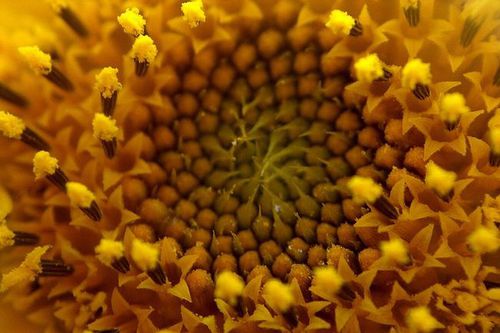August 4, 2017
Kyoto Univ. Suggests New Theory to Support Biodiversity
Keywords: Ecosystems / Biodiversity

Image by Michael Schönitzer. Some Rights Reserved.
Dr. Kazuya Kobayashi, a junior associate professor at Field Science Education and Research Center of Kyoto University, released a new theory on March 9, 2017, suggesting that in plant reproduction, the allocation of species-specific resources to male reproductive function (e.g. pollen) and female reproductive function (e.g. seeds), - referred to as "sex allocation"- plays an important role in sustaining biodiversity. The study appeared in the March 6 issue of the journal Scientific Reports, an online English multidisciplinary scientific journal.
The study provided insights into the relationship between the sex allocation and the sustainability of biodiversity, as well as the suggestion that the intensity of density-dependent competition among members of the same species influences patterns of biodiversity in the entire ecological community. The study also assumes that the suggested theory can be applied to all sexual reproducing living organisms, including plants, animals and insects; therefore, further research into how the evolution of species is linked to the population dynamics of the entire community could contribute to clarifying mechanisms of supporting biodiversity.
In the theoretical study, the allocation theory predicts equal allocation to male and female reproductive functions for the conditions where multiple individuals of the same species live in the pollen dispersal area; whereas in low density conditions, a biased allocation evolves, which reduces pollen and increases seed production. As the effectiveness of reproduction of plant species largely depends on the amount of seed production but is scarcely influenced by the amount of available pollen, population growth rates are expected to become equal among species.
A model that was built to examine this assumption successfully demonstrated the sex allocation of resources to seeds and pollen that varies with the density, thus leading to invariant population growth rates (production of seeds) among species, allowing the co-occurrence of more than 600 species. In addition, the results obtained with this model correspond to the correlation between the number of co-occurring species and the total number of individuals, which is observed in a real-world biological community.
Related JFS Articles
Related
"JFS Newsletter"
- 'What Are the Roles of Zoos Today?' - Interview with Director of the Popular Asahiyama Zoo
- Nishiawakura's Initiative for 100% Energy Self-Sufficiency, and a Municipal ICO Scheme
- 15-Year Integrated Forest Environment Education in Shimokawa, Hokkaido to Support Sustainable Forest Management
- Fifth Contest to Award Excellent Environmental and Social Practices by Junior High, High School Students
- Increase Revenues without Increasing Catches -- How the Sustainable Sakura Shrimp Fishery in Suruga Bay Does It


